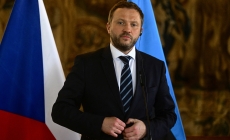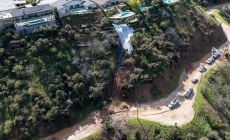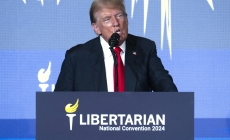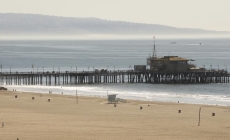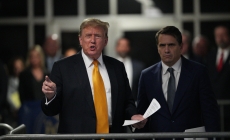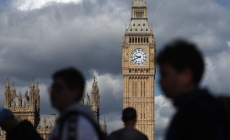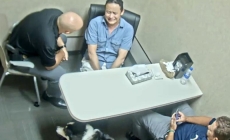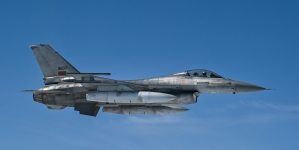-
Russia Tests NATO With Bold Border Move: ISW - May 24, 2024
-
A portion of Mulholland Drive, damaged by mudslides in winter storms, reopens - May 26, 2024
-
‘Maybe You Don’t Want to Win’ - May 26, 2024
-
Donald Trump Putting Law Enforcement in Danger: Attorney - May 26, 2024
-
Avoid the waters of these 5 L.A. County beaches this holiday weekend, public health officials say - May 26, 2024
-
Bawdy Comedy ‘Anora’ Wins Palme d’Or at Cannes Film Festival - May 26, 2024
-
Map Shows Heat Wave Zone Spread Into Five New States - May 26, 2024
-
Azusa police arrest suspected slingshot-wielding vandal - May 25, 2024
-
Donald Trump Hammers Judge Ahead of Jury Instructions - May 25, 2024
-
Sometimes U.S. and U.K. Politics Seem in Lock Step. Not This Year. - May 25, 2024
Russia Tests NATO With Bold Border Move: ISW
Moscow is looking to test NATO’s “resolve” after Kremlin border guards removed buoys that marked Russia’s maritime border with Estonia, according to a report from the Institute for the Study of War (ISW).
Estonian Police and Border Guard said in a release that Russian law enforcement removed part of the floating border placed in the Narva River overnight Thursday. The buoys are used to mark shipping routes and the border is placed every spring as part of a 2022 agreement between Tallinn and Moscow, Estonian police said.
Eerik Purgel, head of the Estonian Eastern Prefecture Border Guard Bureau, said in the release that Russia had previously expressed dissent for Estonia’s placement choice for the buoys last year. Tallinn officials installed the first 50 of 250 buoys on May 13 in accordance with the 2022 agreement, “because they are necessary to avoid navigational errors, so that our fishermen and other hobbyists do not accidentally wander into Russian waters,” Purgel said. Russia removed 24 of the buoys early Thursday morning.

MICHAL CIZEK/AFP via Getty Images
“This action by Russia, carried out in the shadow of the night, fits well within the broader pattern of Russia’s provocative behavior, including on its borders with neighbors, most recently vis-à-vis Lithuania and Finland,” said the Estonian Ministry of Foreign Affairs, which noted in a statement that its country is in “close contact” with NATO allies and partners “as we continue to counter Russia’s malign activities across Europe.”
Tension between the NATO alliance and Russia has amplified over Moscow’s invasion of Ukraine, and the ISW think tank on Thursday said in its assessment of the war that the Russian border guards “are likely attempting to create contention along the international border between Russia and a NATO member country to gauge NATO reactions to future Russian efforts to challenge established delimitations.”
Questions over Russia’s maritime border in the Baltic Sea also arose this week after a decree was published on a Kremlin website that called for a reassessment of the borders drawn up in the Gulf of Finland. That document has since been deleted, as Russian state news reported that anonymous military-diplomatic sources claimed that Moscow “does not have any intentions of revising the state border line” in the region.
The document, however, sparked condemnation from a handful of NATO members. The Lithuanian Foreign Affairs Ministry told Politico that Moscow’s actions were “seen as a deliberate, targeted, escalatory provocation to intimidate neighboring countries.” Finland Prime Minister Petteri Orpo said in a statement that authorities were “analyzing the reports in the Russian media concerning the maritime zones in the Gulf of Finland” and that Russia had “not been in contact” with the Finnish government.
Kremlin spokesperson Dmitry Peskov said during a press briefing Wednesday that his government needed to “ensure its security” in light of tensions in the Baltic Sea.
“The level of confrontation in the Baltic region requires Russia to take steps to ensure its security,” Peskov said, as quoted by Russian state-run news agency TASS. “The situation in the world requires in-depth dialogue to find ways out of tension, but the collective West rejects it.”
The Kremlin has not publicly responded to Estonia’s reports regarding the Narva River maritime border dispute. Newsweek reached out to Russia’s Foreign Ministry via email for comment late Thursday night.
Uncommon Knowledge
Newsweek is committed to challenging conventional wisdom and finding connections in the search for common ground.
Newsweek is committed to challenging conventional wisdom and finding connections in the search for common ground.
Source link


